Homemade Autumn Playdough Recipe
Playdough is such a simple thing to make I always use our no-cook playdough recipe and this time was no exception – what I love about this easy homemade playdough recipe is that it allows you to add so many different things to it to theme it or make it suitable for the season. For our October Playdough, I wanted to bring the scents of Autumn to our table and autumn colours so that we could explore and introduce some sensory vocabulary for the season.
To explore the playdough – I set up some nature finds from a recent autumn walk including Sweet Chesnuts, Conkers, Leaves and branches that T could use to explore the dough with and see what patterns it could make as well as combine them to create some interesting structures.
Materials Needed
Ingredients for making Homemade Playdough
Orange Food Colouring (Paste or gel gives a more vibrant colour)
Ground Cinnamon
Ground Nutmeg
Ground Cloves
Ground Ginger
Ground All Spice
Orange flavouring or essential oil
Making up the playdough
Mix up the recipe according to the instructions on our homemade playdough recipe – into the water add in the orange food colouring as well as the spices and flavouring.
Why not try some of these other homemade playdough recipes
Exploring Nature Finds and playdough
We took the exploration of the nature finds with the playdough as an opportunity to extend some language. I love sitting down with T and both of us having our own sets of playdough or combining and sharing a set, this time we shared as I wanted to talk about the feel, smell and look of the playdough and our nature finds.
I set up the playdough and the finds and we first looked at them – the conker (horse chestnut seed/buckeye) looked shiny, the sweet chestnut case looked prickly and the leaves crunchy and dry. The playdough was Orange and looked like it would be squidgy. Take time to add in other words ask children to “guess” what it may smell like, or feel like whilst you look at the objects.
We then picked up the objects and explored them with our hands – the sweet chestnut was hurty – we took the opportunity to talk about what made it hurt and why it may do that. T explored the prints that the nature finds made in the dough, whilst she made the prints we could talk about the words associated with printing like pressing hard, or gently, rolling.
As we played with the objects and the dough T noticed the smell “What’s the lovely smell”, we took time to see if we could identify any of the smells – she said she could smell gingerbread men and apple crumble mixed together. Our hands smelled like oranges – for some reason the orange smell stayed with our hands whereas the spices used didn’t as much.
All of the language we used as we played together form part of her sensory vocabulary which as we play through the seasons we can start to introduce more and more.


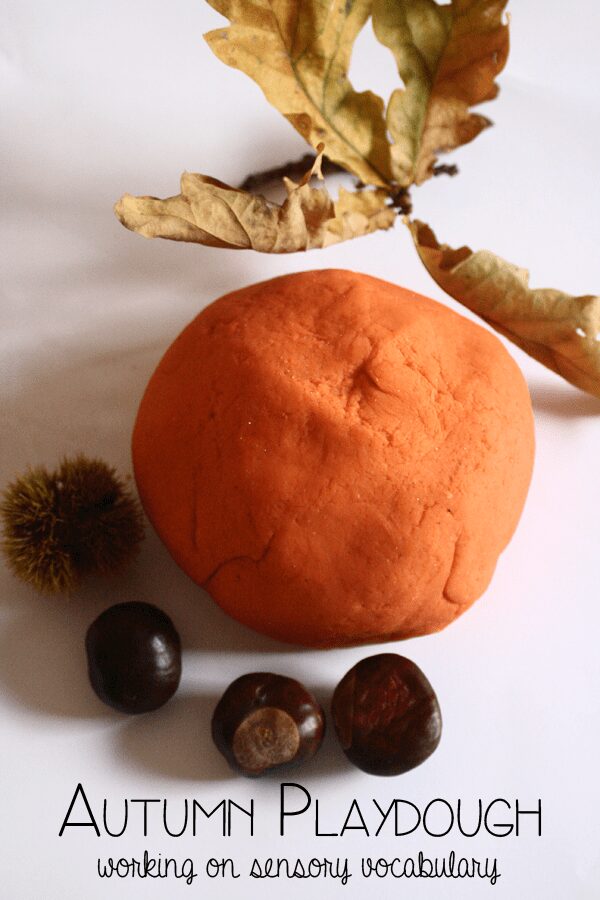
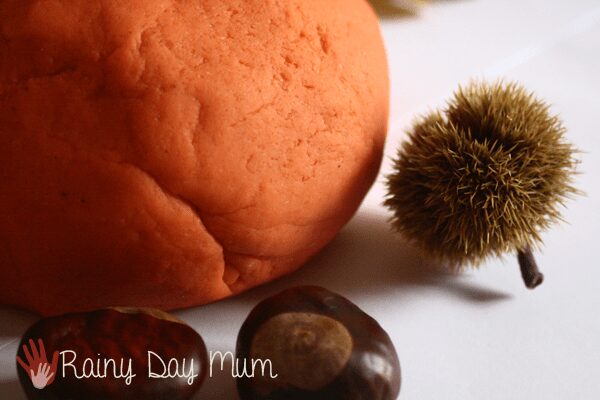
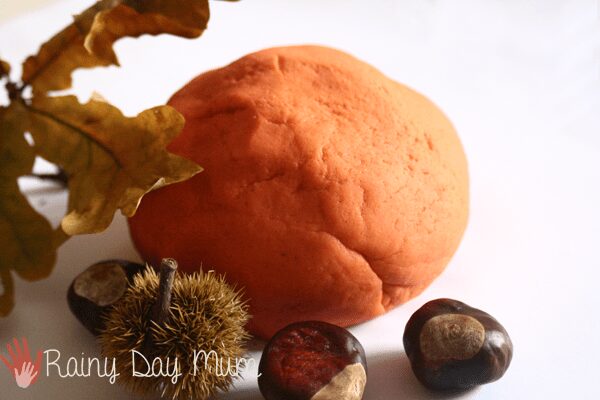
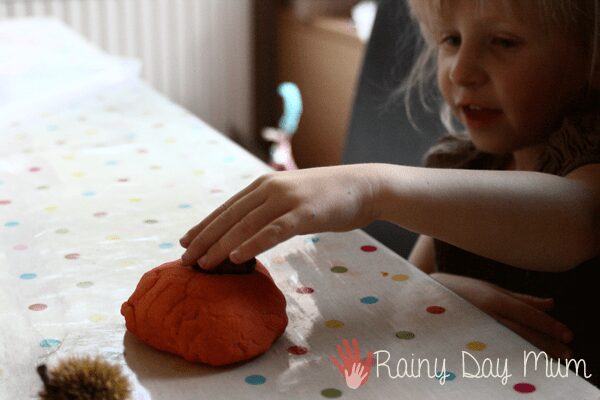

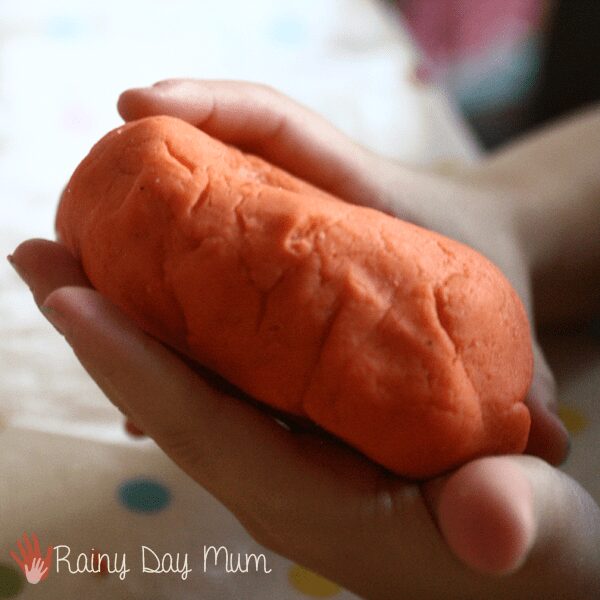
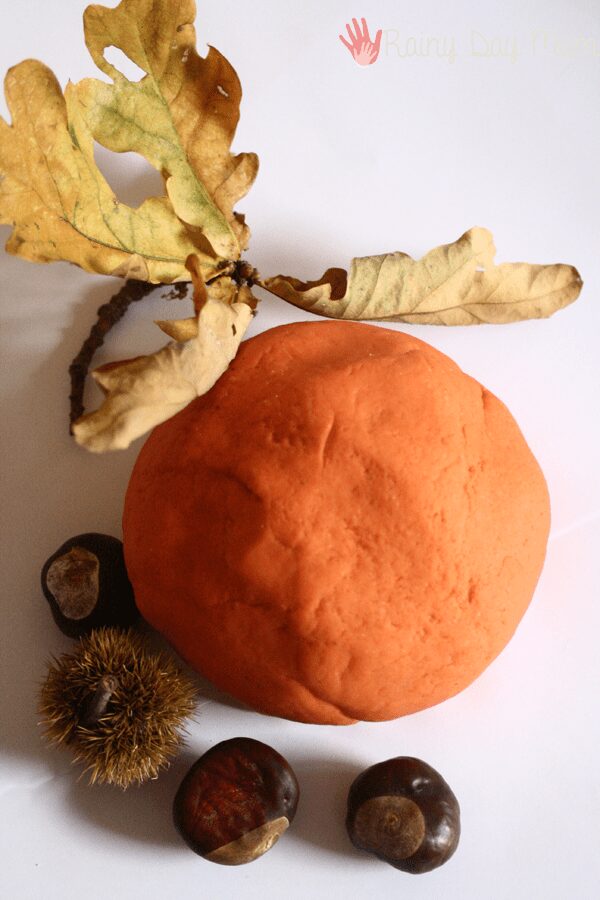
You may want to remove the word sauce from cream of tartar in the ingredients list
Cream of tartar is a powder found with the spices, very different then tartar sauce. Just so there is no confusion for your readers whilst shopping for ingredients 😉